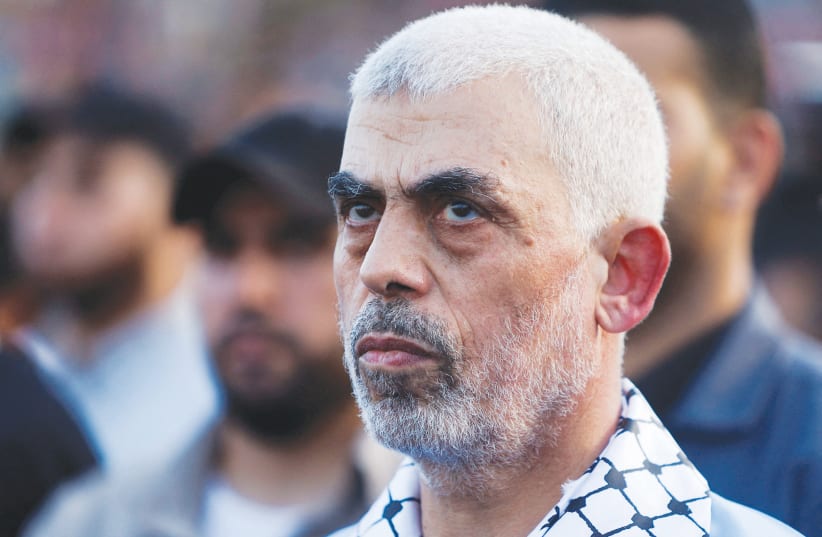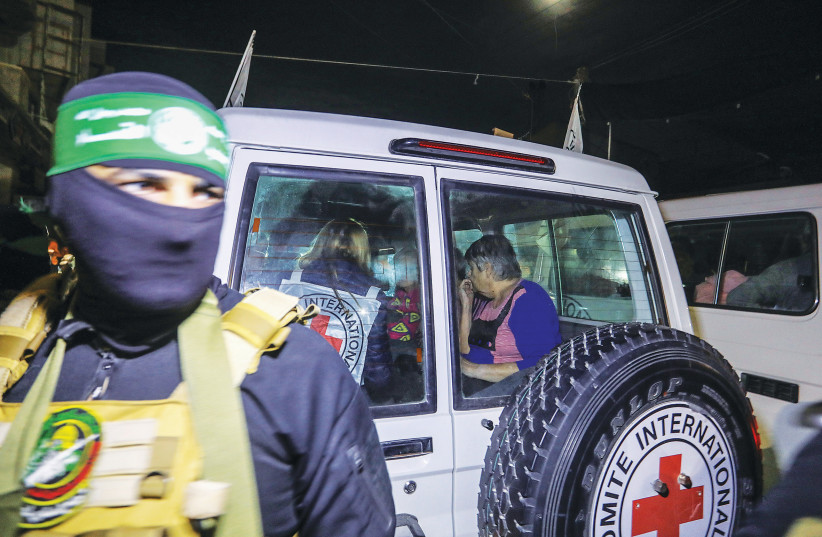Back in the early 1980s – years before the age of the Internet and the development of social media – I was asked by the Labor Party’s international department to prepare 12 posters to explain why Israel refuses to talk to the PLO (all this before the changes that led to the Oslo Accords, a decade later).
For several years, party chairman Shimon Peres, and other Labor leaders, would take these posters with them when they went abroad, to explain the Israeli position to fellow social-democratic parties. Each poster dealt – using photographs, texts, and other graphics – with a particular argument related to the issue.
As I try to grapple with our current hasbara (public diplomacy) challenges, I have tried to think how I would portray all the various issues involved, in poster form. How would I focus on the main points of each issue, and best portray them, in order for the point to get across?
Here are several examples of how I would present the issues.
The first concerns the question of whether Hamas is a “radical” yet legitimate national liberation organization, or a terrorist organization. Various states, organizations, and media outlets either define Hamas as a terrorist organization, or deliberately avoid doing so, to our great chagrin.
The main problem is that there is no agreed definition of terrorism in international law, though there are certain acts that are considered forbidden under this law, in the course of armed conflict, which may be considered as acts of terror.
Many of the monstrous acts committed by members of Hamas, and other Palestinian individuals and groups, in the course of their attack on Israel on October 7 fall within this category. If Hamas as an organization sanctioned such acts – for example in written instructions that Hamas members carried with them during their activities – then the publication of these instructions can serve as proof, side by side with graphic presentations of the monstrous acts themselves.
A second proof is the texts of the blatantly antisemitic 1988 Hamas Charter, which calls for the total rejection of a Jewish state in the territory of Palestine and the killing of all Jews as a means for achieving this goal. A document published in 2017, which does not replace the Charter, offers a more pragmatic, more palatable intermediate, modus operandi.
In one or two posters, I would also try to condense Israel’s efforts to reach some form of modus vivendi with Hamas, since the latter came to power in the Gaza Strip in 2007. This would include successive military clashes and operations, each of which began with indiscriminate mortar fire, and the shooting of rockets from the Gaza Strip in the direction of Israeli civilian population centers.
Each ended inconclusively, with short-term pauses in the violence, and Israeli efforts to strengthen the Gazan economy as an incentive to the Gazans to avoid violent clashes with Israel – all part of the infamous fallacious “misconception.”
All this is the background for the conclusion, after the atrocities of October 7, that Israel has no alternative but to eradicate Hamas as a governing force and destroy its military force both above and below the Gaza Strip.
Unfortunately, none of this can be achieved without massive destruction of living quarters and infrastructures, accompanied by extensive loss of civilian lives, no matter what precautions are taken by the IDF to minimize its dimensions.
This perspective – which takes a look at the recent past, and not only the present and near future – appears to be almost totally absent from most foreign media reporting, and Israel’s own hasbara efforts.
Hostage-taking is totally incompatible with international law
A THIRD issue concerns the freeing of the Israeli hostages – the vast majority of them civilians, many of whom also lost relatives and friends during the atrocities of October 7.
The only effective way to achieve this was for Israel to release Palestinian men and women, members of Palestinian organizations (Hamas and others) or individuals who were held in Israel in detention, or imprisoned following trial and conviction, for attempted or successful acts of terror.
The hostage-taking by Hamas, and other terrorist organizations and individuals on October 7, does not in any way tally with international law. Certainly, the alleged promise by Hamas to pay the terrorists for hostages they brought into the Gaza Strip from Israel – whether Jewish, Arab, foreign agricultural worker or caretaker, soldiers or civilians, toddlers, senior citizens, persons in poor health, wounded, or even killed by Hamas before being abducted – makes the whole phenomenon especially gruesome.
The complete misunderstanding of what Israel confronts was well demonstrated by Sky News broadcaster Kay Burley, who out of ignorance, and possibly also a tinge of antisemitism, recently asked an Israeli spokesperson whether Israel’s agreement to release three Palestinians for each freed Israeli hostage is not an indication of Israel’s undervaluation of Palestinian lives (i.e. racism).
I would have pointed out to Burley that 12 years ago, for the release of one soldier kidnapped to the Gaza Strip – Gilad Shalit – Israel released 1,027 Palestinian terrorists held in Israeli prisons. This included today’s leader of Hamas, Yahya Sinwar, who was serving several life sentences for murder, just because Hamas would not settle for fewer releases of Palestinian terrorists. It was an exchange that in retrospect resulted in hundreds (or more) of Israelis being killed.
IN CERTAIN respects, the conduct of the International Red Cross in the whole hostage issue has been highly objectionable at best. The organization apparently refused to insist on handing over life-saving medications to Hamas, for elderly hostages, as in the case of 84-year-old Alma Avraham, who was returned to Israel in a state of multiple organ failure and close to death.
The Red Cross also acquiesced to Hamas’s refusal to let the international organization examine the hostages – including the wounded or those with special health requirements. This question ought to be raised, and presented visually to the world. (It must be acknowledged, however, that without the Red Cross, it would have been much more difficult to release the Israeli women and children held hostage by Hamas, who were exchanged for women and under-aged Palestinian prisoners and detainees held by Israel.)
These are but three issues among many that deserve serious hasbara treatment. Some issues are highly sensitive, such as the fact that quite a few Israeli women murdered on October 7 were brutally raped before being killed.
Many enemies of Israel, including Palestinian Authority President Mahmoud Abbas, actually deny that rapes took place, or any of the other atrocities committed by Hamas on that cursed day, even though there is abundant evidence, including visual evidence, for their having occurred.
But how does one grapple visually with such an issue, without desecrating the honor and memory of the victims? Even in the early 1980s, there were several topics related to the PLO that we consciously did not portray on the posters.
The writer worked in the Knesset for many years as a researcher, and has published extensively, both journalistic and academic articles on current affairs and Israeli politics. Her most recent book, Israel’s Knesset Members – A Comparative Study of an Undefined Job, was published by Routledge last year.

